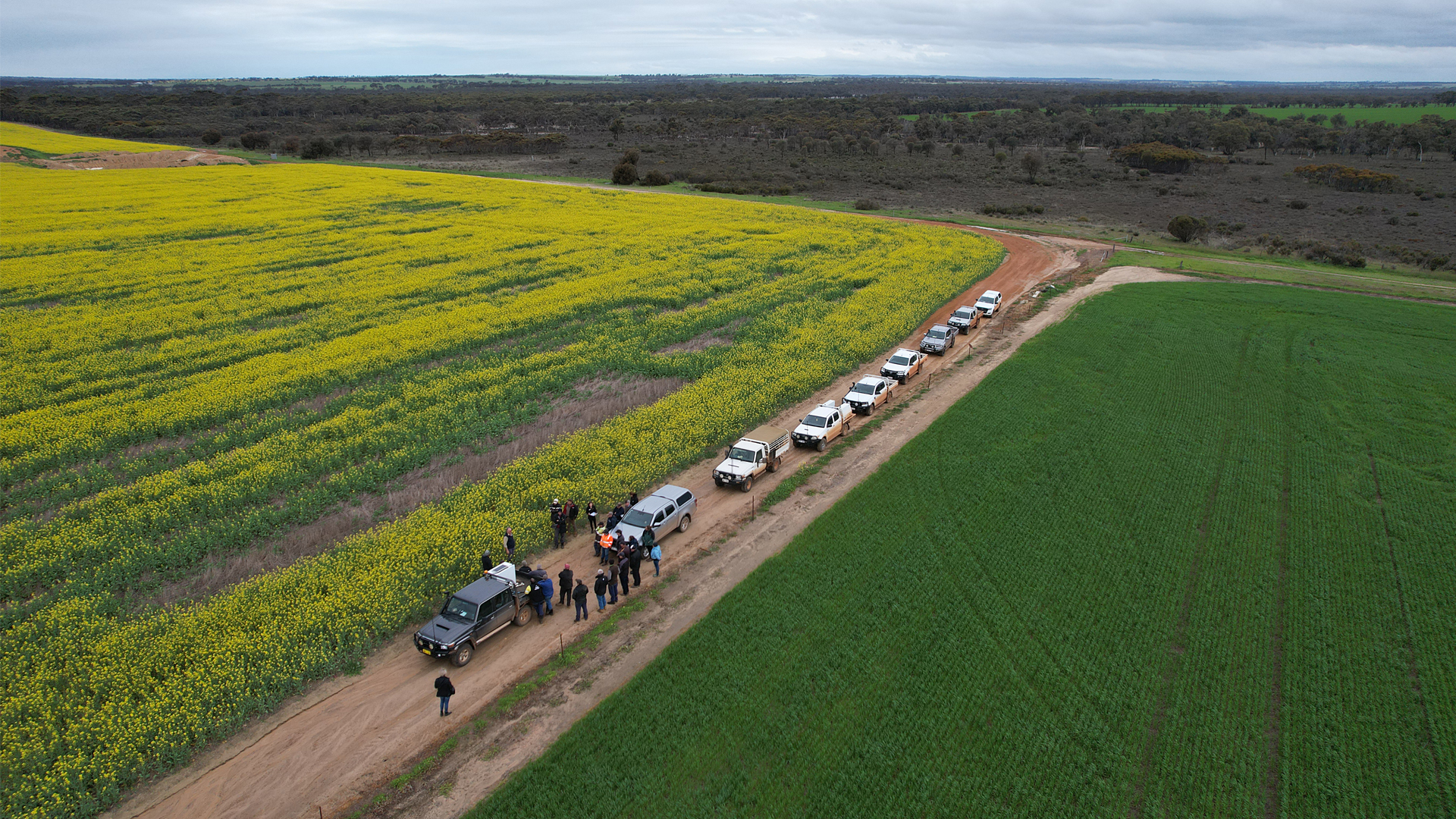Tips for mouse management over summer
- Harvest clean
- Reduce food in stubble by grazing where possible
- Focus on stubbles where there was head and grain loss
- Spray out summer germinations
- Monitor mice
- Check on bait availability.
Two good seasons in a row for Western Australian growers – together with hail events that might have caused significant crop damage – could see more available feed for mice. Heading into the 2023 season, there is a risk of a rapid increase in mouse numbers and growers need to be vigilant.
Brad Jones from Taurus Aviation says prevention is better than a cure when it comes to managing mice. Having had a busy season in 2022 aerial baiting for mice across WA, Mr Jones, who also farms 11,000 hectares in Tammin, says there are some runs on the board.
“It was a reasonably successful year for baiting mice in 2022 for several broadacre enterprises, although we heard some reports of dead mice being screened out of canola at receival points after taking refuge in swathed canola.”
Mr Jones credits the success of mouse baiting over the season to an increase in awareness of the need for mouse management through growers and advisers attending the GRDC-CSIRO supported ‘Mouse Roadshows’ in late March and August – key times in the season to bait mice.
The workshops were led by leading rodent management scientist Steve Henry and ecologist Dr Wendy Ruscoe, from CSIRO. They travelled from Yuna in the north of WA to Beaumont in the south, covering 32 locations and delivering the latest mouse management information to 542 growers and advisers in small group sessions.
“Key to the success was also taking a region-wide approach to baiting,” Mr Jones says.
He equipped his two planes this season with meter rates to spread mouse bait and joined forces with other service providers in WA to support growers with their baiting programs.
The WA grainbelt is an extensive region and aerial baiting services were in high demand while being thin on the ground, so we had to work together for the benefit of the industry.
Fielding the phone calls for Mr Jones’s was his operations manager Ceri Coetzer, who says the phone rang hot.
“Together with the support of experts, as an industry we are learning from experience about the best ways to manage these pest incursions,” Ms Coetzer says.
“For the most-efficient use of the planes available, we were trying to reduce the amount of travel and concentrate services in areas, so I was asking growers to talk to their neighbours, getting them to check their mouse numbers and then baiting larger areas in one go, so the planes did not have to double back.
“We were talking behind the scenes with other aerial baiters and sharing the load. Mice don’t recognise arable hectares or boundaries or fencelines – they move to where the food is.
“Collaboration with neighbours, industry and baiting operators contributed to a successful mouse management campaign in 2022.”
Mr Henry says it was also encouraging to see the large number of WA growers attending the GRDC-supported Harvester Set-Up workshops convened by the Grower Group Alliance in September 2022.

Severe mouse damage in a WA canola crop. Photo: GRDC
“It is important to harvest as clean as possible – not only to maximise valuable grain yield but also to reduce the amount of food left for mice,” he says.
“There are two times of the year that are the most effective to bait: straight after sowing, especially if sowing with knives as the bait will stay on the soil surface and is easily taken by mice, and then in spring just before the heads are filling.
“However there needs to be low amounts of food available for mice at these times to ensure mice will take the bait.”
Mr Henry says the emphasis should always be on reducing food in paddocks.
“Even if you think your paddocks are clean, remember only 150 kilograms per hectare of alternative food across your paddock equates to 50,000 mouse days of food.
“Be aware of any paddocks that may have incurred hail damage or head loss as there may be excess grain on the ground, which mice will hunt out.”
Stubble management is also a priority to reduce mouse numbers, Mr Henry says.
“Reduce the amount of grain on the ground by grazing, if possible. Most importantly, be vigilant and monitor for mouse activity.”
GRDC has produced mouse chew cards, which are a highly effective yet simple tool to measure activity in paddocks. These can be downloaded, along with more information about mouse control, at the GRDC Mouse management page.
Mr Henry also encourages growers and advisers to report and map regional mouse activity (presence and absence) using the MouseAlert website so others can see the scale and extent of localised mouse activity. Together with a program of targeted monitoring across the country, reports made via MouseAlert are used by CSIRO to monitor mouse populations and forecast the likelihood of mouse outbreaks.
Knowledge sharing and equipment upgrades
Ceri Coetzer says it was great to see the number of advisers in attendance at the mouse roadshows.
“Advisers play a key role in knowledge sharing with growers. They work across regions so are aware of mouse abundance at the landscape scale,” she says.
Kukerin adviser Kim Gooding attended the workshops and then went on to share information with his clients.
“These events are important for us to learn as a collective and be aware of rules of thumb to manage pests that have impacts across landscapes and businesses,” Mr Gooding says.
Going forward into the 2023 season, he says he is seeing growers mounting bait spreaders behind their seeders or on their spray units.
“This will really increase the ability of growers to bait in a timely way, allowing growers flexibility to bait at the times best recommended by the CSIRO.”
More information: Steve Henry, Steve.Henry@csiro.au, 0428 633 844.

























































